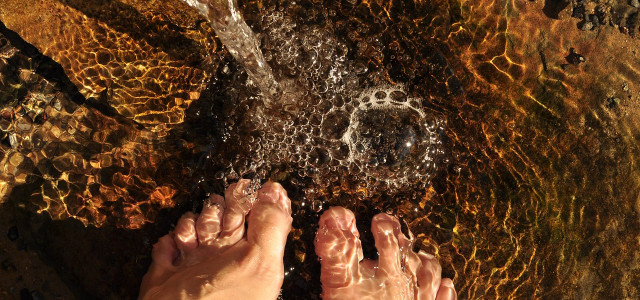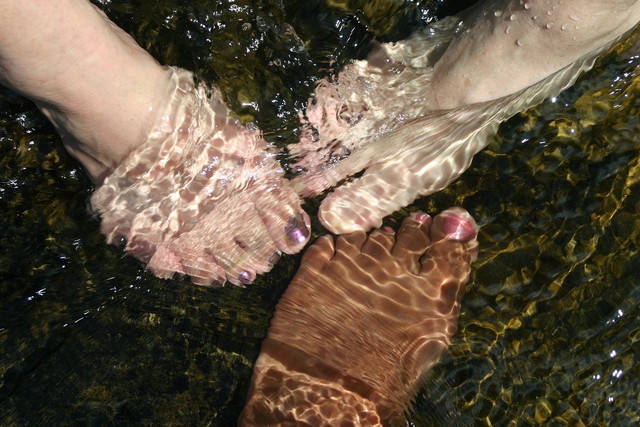
An ascending foot bath should not only warm your feet, but also help with problems in the nose and throat. Here you can find out how the foot bath works and what you should pay attention to.
With an ascending foot bath, you gradually add more and more warm water to the foot bath, so that the water around your feet becomes warmer and warmer. It seems quite logical that such a foot bath is relaxing and helps with cold feet. But it is said to be able to do a lot more and, above all, to help with colds by fending off pathogens in the mucous membranes of the nose and throat.
Rising foot bath: what does it do?
Warm footbaths are especially beneficial in the cold season. According to NetDoktor, warm and rising foot baths can have a calming effect, promote sleep, and lower blood pressure. dr Jakob Berger from the Bavarian Association of General Practitioners also confirmed to the editorial network Germany that an ascending foot bath can prevent and relieve colds.
According to naturopathic views, this is due to the reflex connections between the feet and the mucous membranes in the nose and throat. If the feet are supplied with blood as a result, the blood circulation in the mucous membranes also increases. This in turn enables them to fight off pathogens better. According to Berger, this effect is even greater if you take a cold shower immediately after the foot bath.
Rising foot bath: Here’s how

(Photo: CC0 / Pixabay / Boesmantjie)
Since you may get a bit tired and sleepy after the ascending foot bath, it is particularly recommended to do the foot bath in the evening. To do this, do the following:
- Fill a small foot tub with warm water at about 90 degrees Fahrenheit. It is best to use a standard thermometer to check the temperature.
- Prepare a pitcher of hot water.
- Sit comfortably and dip your feet in the warm water.
- Now regularly add a sip of hot water from the pot.
- Do this for a period of 15 to 20 minutes. In the end, the temperature of the water should be around 40 degrees Celsius. It shouldn’t get any hotter.
- Then dry your feet well.
- For even more relaxation, it is best to lie down for about 20 minutes with your legs elevated.
Note: You should not do the ascending footbath if you have certain ailments. This applies, for example, to thrombosis, varicose veins, heart problems, a diabetic foot or arterial circulatory disorders.
Read more on Techzle.com:
- Make your own foot bath: 3 recipes with natural ingredients
- Sweaty feet: The best tips and home remedies
- Fish Spa: Why you shouldn’t have a fish pedicure